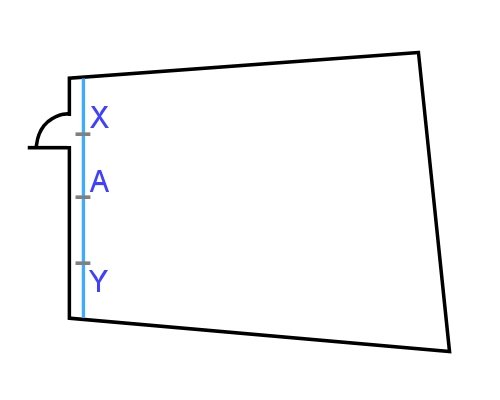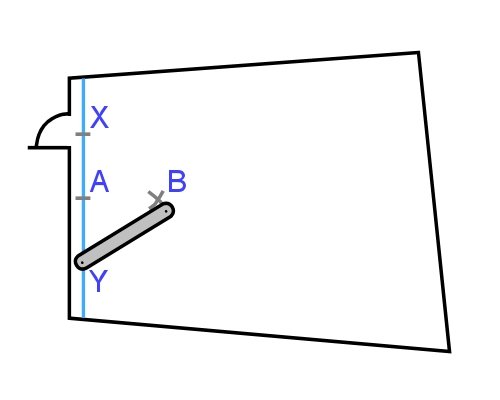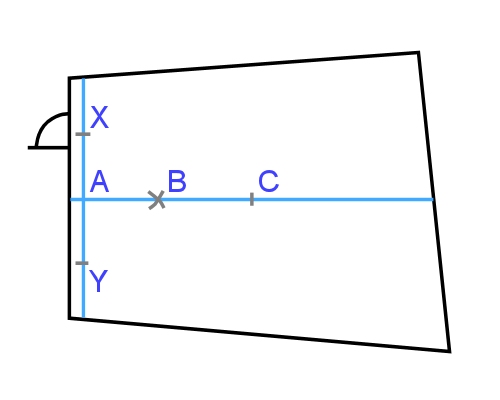Finding the starting point
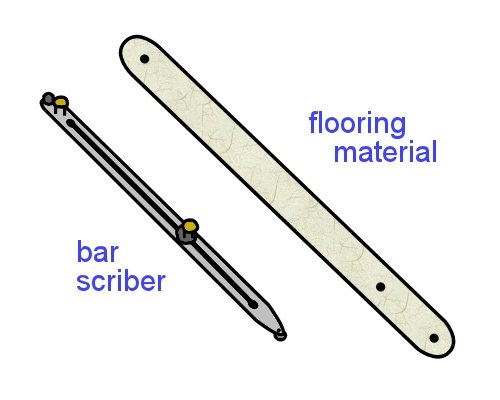 Audio for slide 2 (mp3 |6|KB)
Audio for slide 2 (mp3 |6|KB)
Some installers use a piece of flooring material about one metre long.
Note that the material must be able to keep its shape and not stretch.
In small areas you could use a bar scriber set to its full length.

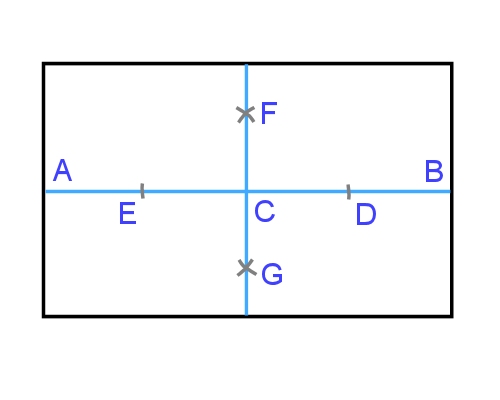 Audio for slide 6 (mp3 |6|KB)
Audio for slide 6 (mp3 |6|KB)
This is why you must start with a baseline (AB) and create an intersecting line (FG) that's at right angles to the baseline.
If the room is perfectly symmetrical, FG will be parallel to both end walls - but if the room is slightly out of square, it won't affect the squareness of your two centrelines.

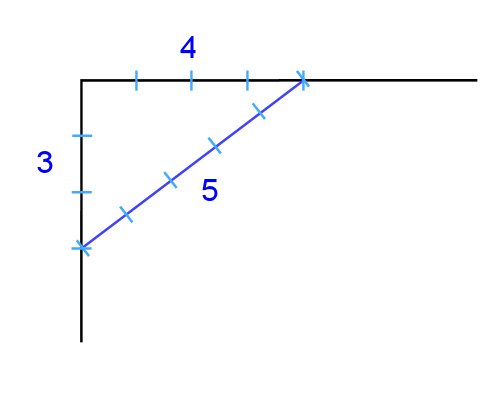 Audio for slide 13 (mp3 |6|KB)
Audio for slide 13 (mp3 |6|KB)
Using the 3, 4, 5 rule
Some installers use the '3, 4, 5 rule' - also called 'Pythagoras's theorem', to find a right angle to another line or wall.
For more details on this technique, and a fuller description of the principles of squareness and right angles, see 'Angles' in the unit: Making measurements.


Learning activity
Audio 14 (mp3 |6|KB)Have a go right now at finding the centre of the room you're in (or a floor area nearby) using the technique described above.
If you don't have a suitable floor area to carry out this activity, practice using the 3,4,5 rule instead. Go to the each of the right-angled corners in the room and check to see whether the walls are exactly square to each other.
Draw up a plan of the floor area you have used and mark the basic perimeter dimensions. Indicate on the plan whether you found the centre of the room or whether you checked the right angle corners.










